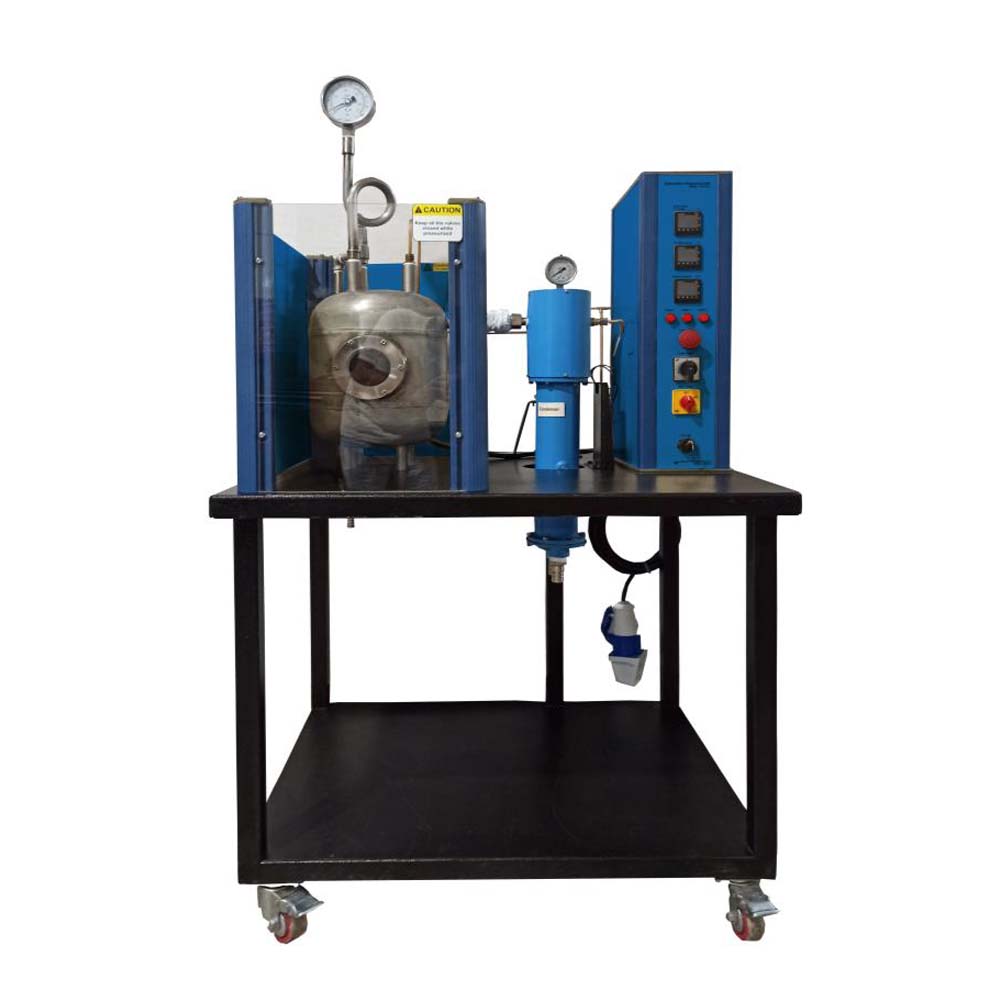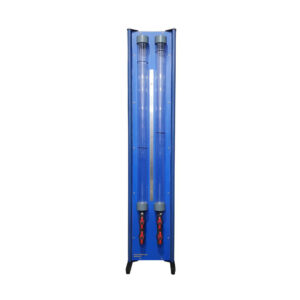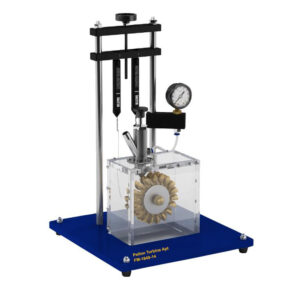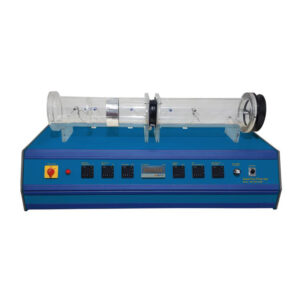The Saturation Pressure Apparatus has been designed to introduce students to how the temperature of water behaves at its boiling point with variation in the absolute pressure. The Saturation Pressure Apparatus offers all the features of a Marcet Boiler and adds the capability of determining the quality of wet steam, thus enhancing the understanding of the underlying thermodynamic principle. Saturation curves can be obtained by the student and compared with published steam tables. The quality of steam exiting the apparatus can be determined using a throttling calorimeter connected at the point of discharge. A bench top unit designed to introduce students to the characteristics of saturated water vapour. The apparatus is equivalent to a Marcet Boiler, with an additional throttling calorimeter and a pipe loop, which enables saturated steam to be returned to the base of the boiler as condensate. Pure water in the boiler is heated to its boiling point using a pair of cartridge heaters with variable power control. A sight glass on the front of the boiler enables the internal processes to be observed, namely boiling patterns at the surface of the water, and also permits the water level in the boiler to be monitored. Saturated steam leaving the top of the boiler passes around the pipe loop before condensing and returning to the base of the boiler for reheating. The operating range of the boiler and loop is 0 – 8 bar. The top limb of the pipe loop incorporates a K type thermocouple, temperature sensor and an electronic pressure sensor to measure the properties of the saturated steam. A filling point at the bottom enables the loop to be filled with pure water. A vapour offtake, with isolating valve, enables steam from within the loop to be passed through a throttling calorimeter, the purpose of which is to demonstrate how the dryness fraction of the saturated steam in the loop can be determined. The steam expands to atmospheric pressure as it is throttled and a second K type thermocouple measures the temperature of the steam following expansion. The apparatus is designed for safe operation with a pressure relief valve set to operate. if the pressure rises above the working pressure and a Bourdon gauge that remains operational when power is disconnected from the electrical console. All power supplies, signal conditioning, circuitry etc, are contained in an electrical console with appropriate current protection devices and an RCD for operator protection. Readings from the sensors are displayed on a common digital meter and all corresponding signals are routed to a USB port for connection to a PC using an optional parallel interface/ educational software package (optional).
Experiments
Saturation loop
- Observation of the patterns of boiling at the surface of the water.
- Measurement of the temperature of saturated steam over the range of pressures 0 – 8 bar and comparison of the saturation curves obtained with those published in steam tables.
- The concept of a saturation line.
- The describing equation and linearisation.
- Gauge and absolute pressures.
- Temperature scales.
- The characteristic behaviour of a two phase fluid.
- The effect of rate of response on the accuracy of measurement.
Throttling calorimeter
- Determination of the condition of the wet steam (quality of the steam) produced by the Saturation Pressure Apparatus at different operating pressures.
- Use of the steady flow energy equation.
- Use of steam tables.
- The difference in enthalpy between phases -enthalpy of vaporisation.
Specifications
- Understanding saturation curves and the characteristics of a two phase fluid.
- Understanding the origin and use of steam tables.
- Using a throttling calorimeter to determine the quality of wet steam.




